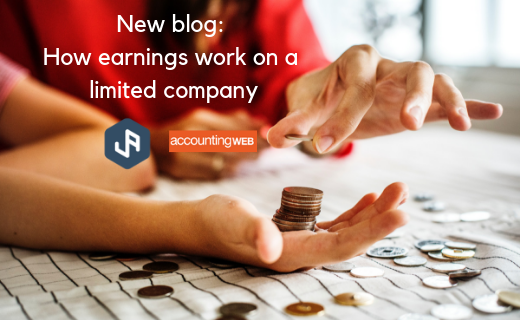If you operate your business through a Limited Company, then your earnings are treated differently than they are if you are self employed or in a partnership.
Firstly, you are an employee of the Limited Company and as such are usually paid a regular salary which may be subject to tax and national insurance depending on how much this is. Your tax advisor should be able to let you know the most efficient way of doing this.
This blog is available on AccountingWeb here:
This salary is then treated as a company expenses and along with any other allowable expenses is deducted from your total income (Turnover) to give a Net Profit or Loss. This figure is what the company pays Corporation tax on, The current Corporation Tax Rate is 19%.
Corporation tax is payable nine months and one day after your year end. So if your year end is 31st December 2018 then you will need to pay your Corporation tax by 1st October 2019.
The amount left over is then classed as retaining earnings. If you are also a shareholder of the business then you can also pay yourself a dividend though its important to note that you can’t pay more in dividends that you have available as retained earnings. If you do then you may have to pay additional tax on this as it is seen as money you have borrowed from the business.
A basic example is set out below:
| Sales/Turnover | £100,000 |
| Less Purchases (Goods for resale) | £ 20,000 |
| Gross Profit | £ 80,000 |
| Less other expenses | |
| Directors Salary | £ 12,000 (this is paid as a salary and is subject to tax and NI) |
| Other Allowable Expenses | £ 43,000 |
| Total Expenses | £ 55,000 |
| Net Profit | £ 35,000 |
| Corporation Tax at 19% | £ 6,650 |
| Retaining Earnings | £ 28,350 |
In the above example, £28,350 is available to pay as a dividend.
Important note: It is always best practice to seek advise from HMRC or your tax advisor to ensure that all expenses you are claiming are allowable and that you have set up your regular salary and dividend payments in the most tax efficient manner.
